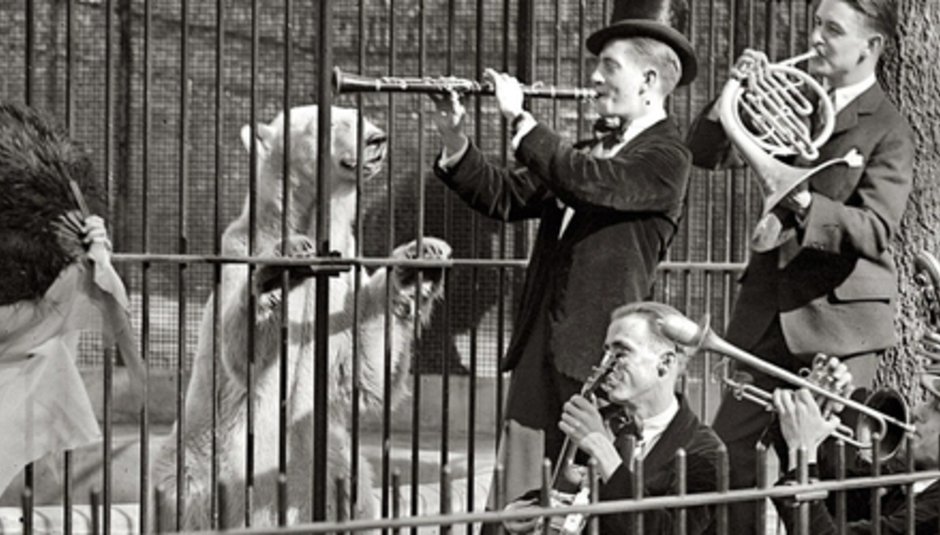Warning: This article contains obscene quantities of incredible music, because this month’s composer wrote far too many masterpieces for his own good. Trying to listen to all of it in one go may cause your ears to fall off. This is an introduction, but hopefully it’s also comprehensive enough to merit more than one visit. I’ve made a convenient playlist of all the pieces mentioned for more comfortable browsing, which you can find here on YouTube or in an expanded version with lots of extra recommended listening here on Spotify. And with that out of the way, let’s start...
Don’t know an Andantino from an Adagietto? Can’t tell the difference between the Borodin Quartet and the Borodin Quartet? Confuse Schubert with Schumann? Baffled by Viola Jokes? Have no idea what a conductor actually does? Slightly irritated by this long list of gently patronising rhetorical questions? Well, you’ve come to the right place, because The Classical is here to dispel the confusion and sweep away the pomposity frequently (but erroneously) associated with classical music. I don’t want to blather on too much this time about why you should listen to it, because frankly, I did far too much of that last month. But what I will say is this – classical music is your rightful inheritance. You owe it to yourself to hear it. It’s far too brilliant and far too important to be left in the hands of people who think its only value is to reinforce their in-born sense of entitlement. It can tell us profound things about what it means to be human, it can show us... well... you know what? I’m just going to let Gustav Mahler explain this for me in more eloquent terms than I could ever manage, at one of the world’s largest, and oldest music festivals. Turn your speakers all the way up, then skip to about the twelve minute mark in this video:
Whether it’s virtuosity, drama, pattern, emotion or beauty that you enjoy, classical music provides them all in abundance. Oh, and there’s also the enjoyable sensation of total and utter smugness that comes with being able to answer questions on certain quiz shows and having an ever-more eclectic last fm profile. This month, I’m going to be attempting an introduction to one of the most prolific, significant and perennially adorable composers ever to have donned a powdered periwig – Wolfgang Amadeus Mozart – or to give him his full title, Wolfgangus Johannes Chrysostomus Theophilus Peter George St. John le Baptiste de la Salle Mozart... or am I confusing him with someone else?
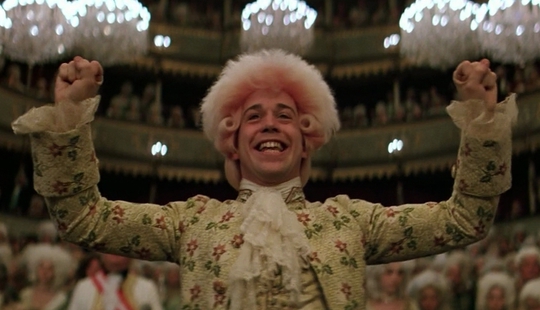
OK, so maybe that isn’t exactly what Mozart looked like, and maybe it’s a bit more 1984 than 1784, and while Amadeus might be a travesty of history in terms of its main story (there was no real rivalry between Salieri and Mozart – the idea was largely cooked up by Pushkin years later and then turned into an opera by Rimsky-Korsakov ) it is surprisingly accurate in almost every other respect, and is in fact a brilliant introduction to almost every aspect of his musical career. To give just one example, which Jack White recently took it upon himself to remind us of, Mozart really did have the scatological sense of humour shown in the film – and this didn’t just manifest itself in his private life, he actually wrote a vocal piece entitled “Leck mich im Arsch” (use your imagination on that one) and wrote instructions to the soloist in the score of one of his horn concertos which included: “pain in the balls ... but do play at least one note, you prick!”. Given that he was also known as a keen dancer, billiards player and practical joker, and that he did most of his composing in bed, I personally don’t have trouble believing in the film’s slightly zany portrayal of the composer. Mozart’s good-humoured nature shines through in his music, and like the work of his friend and some-time mentor Haydn, gives the lie to the idea that classical music is always deeply serious.
Mozart’s name is almost synonymous with genius and prodigious talent – even the most cursory glance at youtube quickly turns up any number of fawning journalists gasping in awe as the latest seven year old child plonks out the Mario theme on a casiotone keyboard, and is swiftly hailed as “the next Mozart”. It is precisely for this reason that a few myths about Mozart need to be dispelled. Mozart was not born a genius, nor was he simply transcribing music directly from the mouth of God. Such ideas, along with the notion that he never made any sketches, but simply wrote complete works in a single draft, were propagated by his widow Constanze, who was an excellent singer in her own right, but elevated her husband to saint-like status in the early decades of the nineteenth century. Instead, Mozart’s talent developed consistently over the course of his career, reaching a peak in his last years. His music was the result of hard work, not luck. He was also nurtured by his composer father Leopold, one of history’s greatest pushy parents, and his elder sister Nannerl, the original wunderkind of the Mozart family. Like many more recent showbiz children, Mozart spent a lot of his childhood on the road, where he learned the family trade and performed blindfolded for the crowned heads of Europe. This experience left him with an ability to produce work which would please his audience but at the same time be musically rigorous, and helped him develop remarkable improvisational skills, which came in handy when he hadn’t had time to finish a piece.
It’s also worth keeping in mind that before the Romantics (particularly Beethoven) showed up and started renegotiating their status, 18th century musicians were generally classed as servants, and relied for the most part on permanent positions in the courts of the wealthy and powerful. Mozart’s talent and popularity allowed him a certain degree of creative freedom, but never a secure income, as he worked largely as a freelance composer, teacher and performer. It’s hard to imagine today, because his music seems intensely, almost ridiculously pleasant to our ears, but in his own time his work was often regarded as being far too complex, and best left to connoisseurs. Musicians also had no means of claiming royalties on their compositions - they only received one-off payments from publishers who were often engaged in a desperate free-for-all to get their editions out first and make a quick profit before the market was saturated by pirated copies of the latest popular tune. Without wanting to make another crude journalistic analogy, Mozart was not unlike some independent musicians today, forced by the conditions of the market to invest more time and effort into live performance, and seeking new audiences further afield. Fortunately, 18th century fortepianos were about eight times lighter than modern grand pianos, so they could easily be transported and concerts could be given at the drop of a hat. Mozart’s series of independently mounted public concerts were as wildly successful as they were unprecedented, but music by composers like Haydn, which was a little easier for audiences of the time to follow, was still far more popular during his own lifetime. While other composers of the period certainly had their merits, Mozart’s combination of the elegance and ease of his own time with the mathematical strictures of earlier Baroque music paid off in the long run, as his music now enjoys an almost unrivalled popularity.
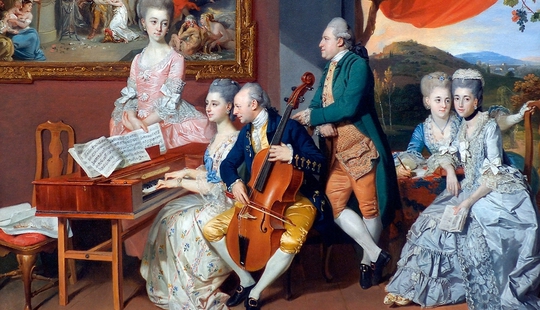
Having started composing from his early childhood, Mozart managed to produce over 600 works during his short life and mastered every genre with apparent ease. If you found Beethoven a little bit intense last month, then Mozart may be up your alley. His works almost always exhibit an incredible degree of finish – resolved, polished and perfect in every detail, with little left to chance. Rather than waiting for inspiration to strike, Mozart was an incredibly diligent craftsman who composed regularly for hours every day. Unlike Beethoven, Mozart was happy to work with any patron, even if they made him write for instruments he hated, and was content to develop the abilities of increasingly professionalised orchestras of the time, rather than trying to push them to breaking point. Orchestras of the period were much smaller, often with less than twenty musicians playing a smaller range of instruments, and as a result were much more manoeuvrable, and could work through Mozart’s endless stream of musical ideas with ease. His music represents the zenith of “Classical” music in its strictest sense – that which was written after the Baroque, but before Romanticism. Classical music in this sense adhered strictly to sonata form and had a kind of horror vacui which resulted in a very full, busy sound, but was by no means inexpressive. Listening to Mozart is like travelling back to witness the unbridled optimism of the Enlightenment and the frivolity and frills of the rococo.
While never inventing any new forms as Haydn and others had done before him, Mozart concentrated instead on expanding, synthesizing and often perfecting, every musical form and development around at the time. While never as explosive as Beethoven, his music had a wide emotional range, from dramatic minor key symphonies inspired by Haydn’s turbulent “Sturm und Drang” symphonies, to refined and stylish concertos influenced by Johann Christian Bach. While generally light and graceful, his output was rarely insubstantial or simplistic. He was entirely capable of creating dark and threatening pieces, but also valued entertainment and virtuosity, intimacy and tenderness. Mozart was also a phenomenally gifted writer of melodies – his phrasing and style are instantly recognisable and likeable. His writing is sometimes lyrical, and at other times possesses an ethereal, almost transcendental beauty, but is always hugely satisfying. Fortunately for you as a reader, there aren’t many lengthy anecdotes about Mozart’s music, nor does it lend itself to tedious and long-winded musical ekphrasis – its beauty speaks for itself, and there are so many pieces that it would be pointless to try and expand upon them too much.
Works
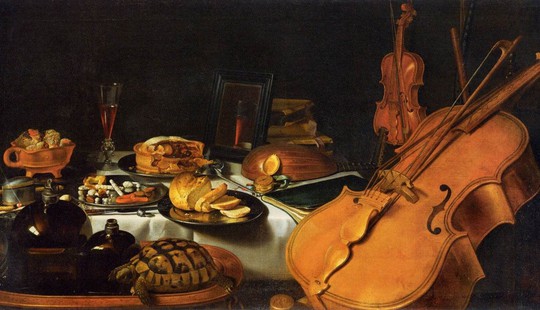
With such a wealth of material on offer, the only question remaining is where to start. Curiously, one of the best places to begin exploring is at the very end of Mozart’s life, with the Clarinet Concerto, the last of the 42 concertos he wrote. In case you didn't read last month's article, I should explain that a concerto is any piece written for a soloist accompanied by an orchestra, which usually has three movements in the order fast, slow, fast. The clarinet itself was only a relatively recent invention at the time Mozart was writing, but already he understood the potential of the instrument, fully exploiting its autumnal timbre and low, burbling rhythms. As with all the pieces I’m going to talk about, I strongly recommend listening to the work in full, but as a taster, here’s the third and final movement – a chirpy little rondo with an incredibly catchy main theme.
Clarinet Concerto K622, 3rd Movement - Rondo, Allegro:
In case you’re wondering why “K622” appears in the title, it’s because a man named Köchel organised all of Mozart’s pieces chronologically by number. Each Köchel number acts like a musical bar-code, making it easier to find and identify a piece, and as a very, VERY rough rule of thumb, pretty much anything from K300 upwards is probably going to be worth listening to. Following on from the clarinet concerto, we reach Mozart’s spectacular piano concertos. The standard of writing in this phenomenal body of work is so consistently high that it’s hard to narrow things down. However, the most important concertos are those composed in Vienna in the mid-1780s – the 14th up to the 25th. The 21st in particular has become extremely famous – this is its stately slow movement.
Piano Concerto No. 21 K467, 2nd movement, Andante:
And just for a bit of a contrast, here’s the 20th piano concerto, with its sinister first movement. Perhaps unsurprisingly, this piece was a particular favourite of Beethoven’s, and he even wrote his own added solo parts for it.
Piano Concerto No. 20 K466, 1st movement, Allegro:
I could happily ramble on for quite some time about these concertos, but because there’s so much material we need to get through, I’ve just included some of my favourite piano concerto finales in the spotify playlist, which you can find at the start of the article. Moving down the list of diverse instruments for which Mozart wrote, we reach the sublime and unusual Flute and Harp Concerto, for which, incredibly, the composer never received payment. Here’s the breezy finale, which is almost constantly stuck in my head.
Concerto for Flute and Harp, K299 – 3rd Movement, Rondo Allegro:
Mozart learned the violin as a child, but surprisingly (or mercifully, depending on how you look at it) only wrote five concertos for the instrument, of which the third is probably the best. The whole work is brilliant, but here’s the luxurious, lilting slow movement to get you started.
Violin Concerto No. 3 K216, 2nd movement, Adagio:
And no account of Mozart’s concertos would be truly complete without the delightfully silly rondo from the fourth horn concerto, which takes inspiration from the sounds of the hunt, a theme which musicians have explored endlessly. As a side note, it’s interesting to remember that French horns in Mozart’s time didn’t have any valves, which made playing them extremely challenging, as the player had to create the notes rather than letting the instrument do all the work:
Horn Concerto No.4 K495, 3rd movement, Rondo
Now that the concertos are out of the way, we can finally move on to the symphonies. Again, there’s a huge amount of material to wade through, but numbers 40, 41 and 25 are the best places to start. Symphonies of the 18th century, much like the orchestras that played them, were much smaller than their later counterparts, typically lasting 20 minutes or less, rather than 90 minutes, like the Mahler symphony above. However, I won’t dwell on their stylistic differences, as listening to the music tells you everything you need to know. The 41st symphony is exceptional because of its endless supply of new musical ideas which fly at you from every direction and the complex layering which characterised Mozart’s late orchestral writing - a result of studying the contrapuntal technique of composers like Johann Sebastian Bach. Occasional moments of high drama reveal the cracks in the facade of classical restraint, while the remarkable interwoven motifs almost threaten to collapse into one another. This work sees Mozart reaching new technical heights, throwing down the gauntlet for future symphonists.
Symphony No. 41 K551 – 4th movement, Molto Allegro:
Here are some highlights from the famous 40th symphony, which has one of the best introductions of any classical piece, and perhaps the most dramatic and evocative of all Mozart’s orchestral works, the 25th symphony, with its moody, minor-key atmosphere.
Symphony No. 40 K550, 1st movement, Molto allegro:
Symphony No. 25 K183, 1st movement, Allegro con brio:
Honourable mentions should also go to symphonies 39, 38, 36, 35 and 29, amongst others, but again, for the purposes of brevity, you can find all of these works in the spotify playlist at the start of the article.
Chamber Made
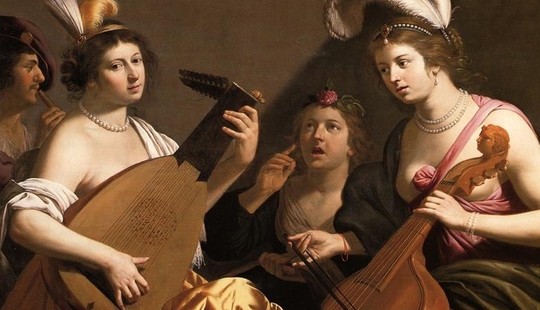
Can there really be more after all that? Yes, yes there is. Mozart’s chamber music (pieces for a small ensemble which can fit inside an ordinary room) is a treasure trove of beauty and imagination. The clarinet quintet in particular has established itself as one of the greatest masterpieces of the entire chamber repertoire. Again, it is the sensitive treatment of the clarinet part and its exquisite interplay with the string quartet which gives the entire piece a luscious, bittersweet feeling throughout. The soothing quality of this work has brought people out of comas, has been used in speech therapy and is frequently played at both weddings and funerals. No, really. Here’s the sumptuous first movement.
Clarinet Quintet K581, 1st Movement, Allegro:
Mozart’s other truly outstanding chamber work is the Gran Partita, a seven-movement serenade written for the strange but wonderful combination of twelve wind instruments and a double bass. The Gran Partita shows off Mozart’s full musical range, from its soaring adagio to the blistering finale.
Gran Partita K361, 1st/2nd movement, Largo - Allegro:
Gran Partita K361, 8th movement, Finale, molto allegro:
Mozart’s consistently underrated string quartets are also worth delving into, especially Nos. 14-19, which Mozart dedicated to his friend Joseph Haydn (who was also the inventor of the form) and are often referred to accordingly as the “Haydn” quartets. Aside from Haydn’s own many brilliant contributions to the genre, this series is the apex of classical quartet writing. Number 19, the so-called “Dissonance” quartet is particularly interesting because of the strange, slow introduction to the first movement which gives it its name. This was an incredibly daring piece of writing for its time, marking a key moment in composers' long obsession with deliberate discord, which resulted in all kinds of strange things in later centuries. The work was in fact so unusual that the publishers sent it back, asking for its “mistakes” to be corrected. Here’s my favourite extract from the quartets to give you an idea.
String Quartet No. 16 K428, 3rd movement, Allegretto:
If you’re feeling adventurous, there are many more chamber pieces to browse through on the spotify playlist. Mozart wrote for an astonishingly wide range of instruments, so if you’re stuck for a place to start, just pick an instrument you like the sound of and go from there.
Pianissimo
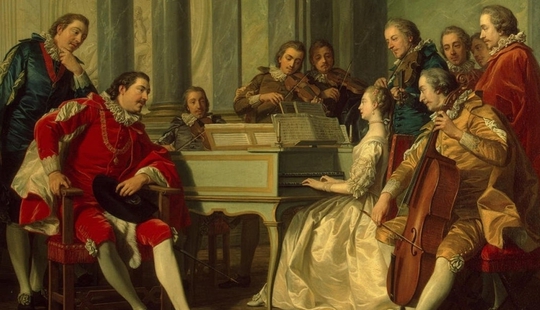
Solo piano music was yet another string to Mozart’s bow, yet aside from a few popular extracts, few have found quite the same level of fame as the virtuosic works of Chopin, Liszt, or other piano-focused composers. While Mozart’s works for the instrument might not have quite the same fireworks and flair as later pianists, they deserve to be heard. Here are a few selections, starting with some pleasing variations on a tune you may know by a slightly different name, although it originally began life as a French song about unplanned pregnancy...
12 Variations on the French song “Ah, vous dirai-je, maman”, K265:
Mozart’s piano sonatas are, on the whole, not as varied or distinct as Beethoven’s, but are still definitely worth hearing, alongside those of his similarly underappreciated rival Muzio Clementi. Just in case you didn’t read last month’s article, a sonata is any piece which follows the basic structure of a fast movement, followed by a slow one, and then a final fast movement, and is usually written for one or two instruments. A good place to begin is with the 11th piano sonata, the first movement of which is a set of beautifully clear variations on a hypnotic theme, while the third movement is probably one of Mozart’s most famous compositions, the “Rondo Alla Turca”, a curious relic of 18th century Orientalism.
Piano Sonata No. 11 K331, 1st movement, Andante Grazioso:
Piano Sonata No. 11 K331, 3rd movement, Rondo Alla Turca:
If, like me, you had the misfortune to grow up with a sibling who played the piano, there’s also a good chance that you know the 16th piano sonata, nicknamed the “Facile” or “Easy” sonata, which was designed for teaching, and remains in use for that purpose:
Piano Sonata No. 16 K545, 1st movement, Allegro:
Technically, Mozart’s violin sonatas really come under the heading of chamber music, but because they are more like piano pieces with a violin accompaniment in the background, it made sense to include them here. There are 36 in total, but many of them were written during his childhood, so they really get interesting from number 17 onwards. A good way to listen is to try and find a complete set somewhere on spotify, browse through to find an introduction that sounds interesting to you, and take it from there. Personally, this is just one of my favourite extracts:
Violin Sonata No. 23 K306, 1st Movement, Allegro con spirito:
And as ever, there are many more extracts to be found in the playlist at the top of the page.
Benedictus
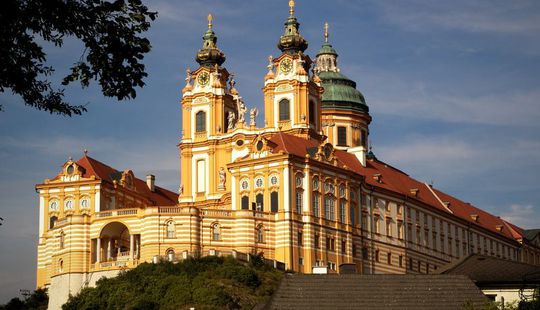
Once upon a time the Catholic Church was one of the main commissioning bodies for serious art in Europe, and music was no exception, although it did take a few centuries for them to be convinced that music which used more than one note as the same time wasn’t necessarily the work of the devil. Mozart, as you might have already guessed from the way the other sections of this article have being going, wrote quite a lot of sacred music, most of which possesses a more solemn, serious quality befitting its religious context, although occasionally the solo parts sound more like opera. Supposedly, on a childhood visit to The Vatican he also transcribed, from memory, a famous piece which was only permitted to be sung in the Sistine Chapel.
The best introduction to this body of work is the famous Requiem Mass – an almost unbearably poignant musical setting of a Latin text used in Catholic services to commemorate the dead. The Requiem was, appropriately enough, left unfinished at the time of Mozart’s death, and was completed by one of his students, though exactly who wrote what isn’t entirely clear. The only other composer who came close to the drama and pain of this work was Verdi, whose own Requiem is a work, which alongside Carl Orff’s Carmina Burana and Prokofiev’s Romeo and Juliet, has become a favourite of lazy television researchers looking for evil-sounding music. Mozart, fortunately, has avoided this kind of pigeonholing. For those of us who don’t happen to speak Latin, this translation is also helpful when it comes to the Latin Mass. You may also notice that the piece is in D minor, which as we all know, makes people weep instantly. Here are a few highlights from this masterful piece:
Requiem, K626 - Introitus and Kyrie:
Requiem, K626 - Dies Irae:
Requiem, K626 - Confutatis and Lacrimosa:
If you like your music good and holy, but prefer something ever-so-slightly less morbid, then Mozart’s last ordinary mass is also a treat. Here’s the ominous opening Kyrie:
Great Mass in C Minor K427, Kyrie:
To my mind, these two masses are by far Mozart’s greatest choral achievements, but there are also a few smaller works and extracts, such as the soothing Ave Verum Corpus, the Solemn Vespers and the Agnus Dei from the Coronation Mass which are well worth investigating, and they are included on the spotify playlist.
Hello Opera(tor)

“For most listeners, opera has vague, mostly derogatory connotations: old, imposing, foreign, dead, faintly ridiculous.” – an insightful comment from an indie music publication which shall remain nameless.
I’ve been saving what are arguably some of Mozart’s greatest achievements until the very end. Why? Because I’m talking about his operas. Yes, opera, that word which can strike fear into the hearts of even the most ardent devotees of difficult music. But opera is really nothing to be afraid of – once you get past the stereotype of the fat lady singing. I want to devote quite a bit of space to Mozart’s operas, because if he had been forced to choose how he was remembered, I suspect he would have wanted these works to be preserved for posterity above all others. In fact, he was so dedicated to the genre that he even wrote a miniature meta-opera called “Der Schauspieldirektor” (The Producer) which shows all the backstage squabbling of the classical world. The word “opera” itself just means “work” in Italian, and over four centuries that definition has encompassed a huge range of material, but at heart, what opera is really about is quite simple – great songs, within the framework of a larger drama. The plots tend to be completely ridiculous, so really it’s best to concentrate on the music. Coming to terms with opera can be difficult, but once you overcome the stylistic hurdle it presents, the rewards to be reaped are enormous. And don’t just take my word for it, everyone from Damon Albarn to The Knife has engaged with opera, with varying degrees of success. While opera is easy to mock for being melodramatic, sentimental and over-the-top, I would contend that these are actually its greatest virtues, especially in the face of the kind musical fussiness and tasteful blandness which afflicts certain musicians today. Again, mentioning no names.
Operas can be huge, unwieldy and difficult to get to know, but Mozart’s provide the best justification and most accessible entry to this intimidating genre. Before talking about them, it’s best to clear up a few technical terms. Firstly, the Aria. An aria (Literally “air” in Italian) is simply a discrete song for one singer within an opera. In fact, you probably already know some famous examples – like the one by Delibes about British Airways, the one by Bellini about perfume, the one by Verdi about elephants, the one by Puccini about football, the one by Rossini about cars, and even that one by Gershwin which you thought was a jazz standard.
Secondly, recitatives – these are the things that really put people off opera, and to be honest, unless you’re watching it live, have a translation to hand, or really care about the plot, there’s not a lot of point in listening to them. Recitatives are the parts in between the arias and choruses where characters speak to each other to drive the story along. The difference between recitatives and dialogue in say, a musical, is that all of it is sung, but in a less melodic style than an aria, with minimal orchestral accompaniment and rhythms that imitate ordinary speech. During the nineteenth century, composers like Wagner started integrating arias and recitatives together into a continuous flow of music. Such works are described as being through-composed, and are a lot more challenging to listen to than clearly compartmentalised operas of the kind that Mozart wrote.
Thirdly, overtures, which are instrumental preludes which introduce the piece, often (although not always) quoting melodies from arias which appear later. Next – the Libretto, this is the text which includes all of the opera’s dialogue and lyrics. Lastly we have the Singspiel, which is simply a German variety of opera, where dialogue is spoken rather than sung – hence the name, which simply means “song-play”. And that’s really all you need to know – things like duets, trios, choruses and so on are self-explanatory, and while other terms can be interesting, they aren’t essential to enjoy the artform.
Mozart wrote operas from childhood, but it is the series of three Italian operas written towards the end of his life in conjunction with librettist Lorenzo Da Ponte for which he is best known. The first of the Mozart & Da Ponte operas, “The Marriage of Figaro”, was written in 1786. It was based on a play of the same name, a then-controversial satire on the decadent aristocracy written by the French polymath Pierre Beaumarchais. This opera is one of the most popular and well-known ever written, and remains one of the most frequently performed. I’ve really cut the highlights down to the bare bones here with some key arias, but don’t worry too much about the words, as it really isn’t essential to know exactly what’s going on. If you are interested though, translations are pretty easy to find, and if you do want to hear more, have a look at the playlists.
Marriage of Figaro Overture:
Se vuol ballare:
Non più andrai:
Voi che sapete:
Next comes “Don Giovanni”, a reworking of the classic Spanish legend, Don Juan, in which a notorious womaniser whose life consists mainly of drinking and violence is ultimately terrorised and dragged off to hell by a man he has killed. This opera is a strange mix of comedy and horror, and has a final climactic scene which has to be seen (and heard) to be believed:
Don Giovanni Overture:
Là ci darem la mano:
Madamina il catalogo è questo:
Don Giovanni, a cenar teco m’invitasti:
Finally comes Così Fan Tutte, known in English by the rather politically incorrect title “Women are like that”. It is a story of a love square rather than a love triangle, soldiers, disguises and confusion. The slightly salacious character of the story meant that this opera was unfairly neglected, but with four main characters, it is full of great excuses for duets, trios and quartets:
Soave sia il vento:
Come Scoglio:
Una donna a quindici anni:
Of Mozart’s German Singspiels, two stand out. Firstly, the less popular “Abduction from the Seraglio”, a brilliant piece weighed down with a less-than-catchy title. It’s at this point that we return to the idea of “alla turca”, because much of the music from this work is inspired, very tenuously, by Turkish janissary music. It had become fashionable in the late 18th century to appropriate aspects of Turkish culture, and to a certain extent, to ridicule them. Like compositions inspired by Eastern European folk melodies (yes, Zach Condon turned up late to that particular party), Turkish music became an excuse to use certain exotic instruments, especially percussion, as well as unusual dynamics, rhythms and melodies. He are a few extracts from this lighthearted piece:
Abduction from the Seraglio Overture:
Martern aller Arten:
Mozart’s final work for the stage is also one of his most famous – Die Zauberflöte – The Magic Flute. The libretto of this work was written by the theatrical impresario Emanuel Schikaneder, who also played the part of Papageno the birdcatcher in the original production. Taken at face value, the story is bizarre and fantastical, but closer inspection of the work yields a number of allegorical interpretations, most obviously in terms of a conflict between superstition, embodied by The Queen of the Night, and Enlightened absolutism, epitomised by the King, Sarastro. The piece also contains a number of more explicit messages, which are hopelessly but beautifully idealistic: the importance of music as a consolation in life and as a power for good in the world, the value of forgiveness over revenge, of truth over lies, and the need to make sacrifices for love. There are two love stories in the piece – one between Tamino and Pamina, which no one cares about, and the other between Papagena and Papageno, the perpetual underdog, which is more entertaining. The Magic Flute is also less than subtle in its glorification of The Freemasons – both Mozart and Schikaneder were members (no conspiracy theories, please), and the main protagonists Tamino and Papageno are made to undergo a series of trials in order to join “The Initiated”. Freemasonry in the 18th century, however, was not just about a load of old men wearing aprons, but involved the promotion of Enlightenment values and learning more generally. Much has been made of Mozart’s use of numbers and codes in musical phrases of the Magic Flute and other works, but personally I think this kind of occult analysis is tedious and pointless. It also distracts from just how good the music is:
The Magic Flute Overture:
Der Vogelfänger bin ich ja:
Ein mädchen oder weibchen:
And lastly, the incredibly famous and notoriously difficult Queen of the Night aria, with its famous screechy high notes, which is one of those classical pieces that you've probably heard a hundred times in adverts without knowing what it is. You’ll probably want to skip to about 2:10 in the video, where the singing begins. Unless of course you enjoy insane German dialogue, in which case, watch the whole thing.
Der Hölle Rache kocht in meinem Herzen:
Exhausted? You should be. I’ve run out of superlatives for Mozart. He was, quite simply, one of the best humans ever. Here’s something to help you sleep after that musical marathon.
Adagio for Glass Harmonica, K356:
Based on an article originally written for One Thirty BPM

